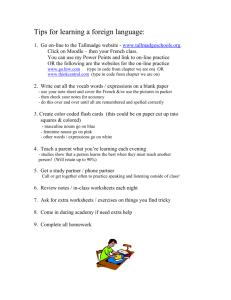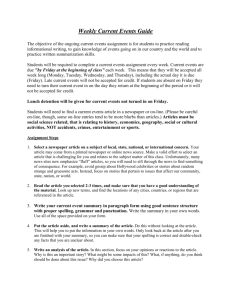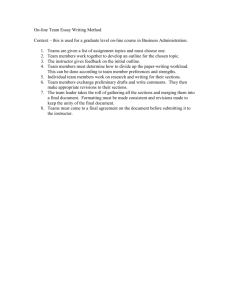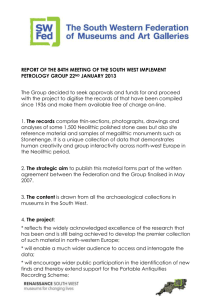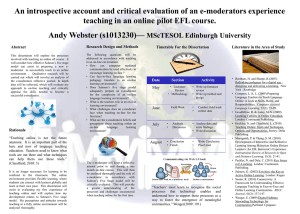Gilly Salmon's Five Stage E-learning Model
advertisement
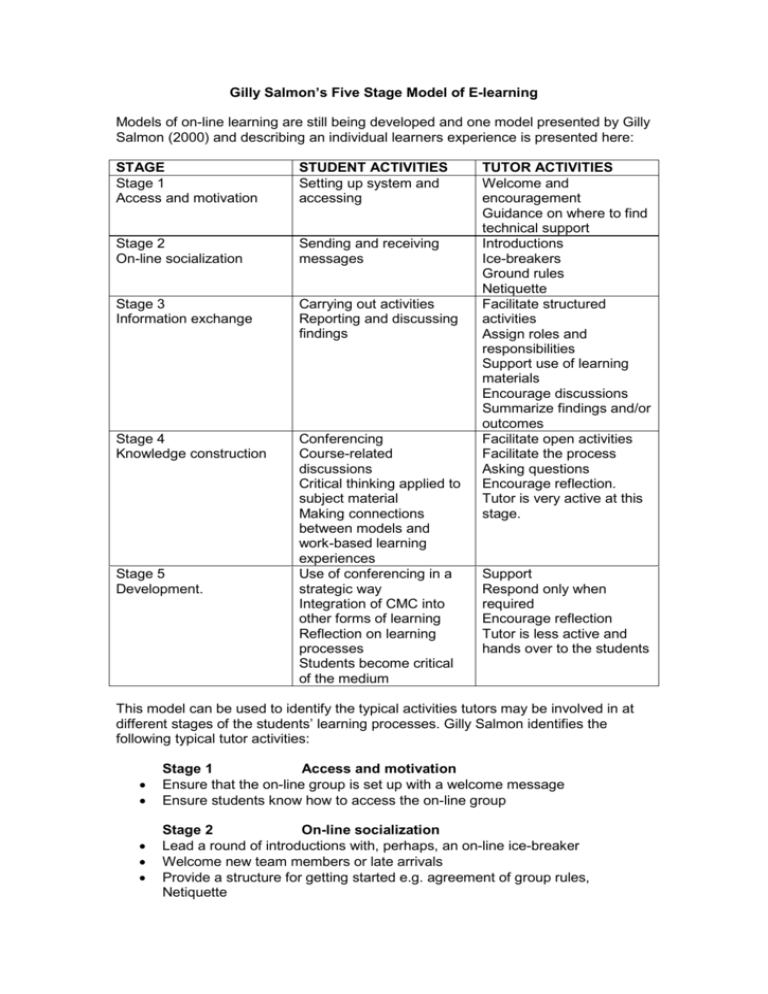
Gilly Salmon’s Five Stage Model of E-learning Models of on-line learning are still being developed and one model presented by Gilly Salmon (2000) and describing an individual learners experience is presented here: STAGE Stage 1 Access and motivation STUDENT ACTIVITIES Setting up system and accessing Stage 2 On-line socialization Sending and receiving messages Stage 3 Information exchange Carrying out activities Reporting and discussing findings Stage 4 Knowledge construction Conferencing Course-related discussions Critical thinking applied to subject material Making connections between models and work-based learning experiences Use of conferencing in a strategic way Integration of CMC into other forms of learning Reflection on learning processes Students become critical of the medium Stage 5 Development. TUTOR ACTIVITIES Welcome and encouragement Guidance on where to find technical support Introductions Ice-breakers Ground rules Netiquette Facilitate structured activities Assign roles and responsibilities Support use of learning materials Encourage discussions Summarize findings and/or outcomes Facilitate open activities Facilitate the process Asking questions Encourage reflection. Tutor is very active at this stage. Support Respond only when required Encourage reflection Tutor is less active and hands over to the students This model can be used to identify the typical activities tutors may be involved in at different stages of the students’ learning processes. Gilly Salmon identifies the following typical tutor activities: • • Stage 1 Access and motivation Ensure that the on-line group is set up with a welcome message Ensure students know how to access the on-line group • • • Stage 2 On-line socialization Lead a round of introductions with, perhaps, an on-line ice-breaker Welcome new team members or late arrivals Provide a structure for getting started e.g. agreement of group rules, Netiquette • • • • • • • • • • • • • • • • • • • • If individuals break the agreed group netiquette then tackle them (either privately or through the discussion group) Wherever possible avoid playing ‘ping pong’ with individual group members and ask other people for their opinions and ideas Encourage quieter members and browsers (sometimes called ‘lurkers’ or ‘browsers’) to join in Provide summaries of on-line discussions. This is called weaving and involves summarizing and synthesising the content of multiple responses in a virtual group. Stage 3 Information exchange Provide highly structured activities at the start of the group life Encourage participation Ask questions Encourage team members to post short messages Allocate on-line roles to individual members e.g. to provide a summary of a particular thread of discussion Close of threads as and when appropriate Encourage the on-line group to develop it’s own life and history. Welcome shared language, metaphors, rituals and jokes. Stage 4 Knowledge construction Provide more open activities Facilitate the learning process Pose questions for the group to consider Encourage group members to question theory and practice e.g. links (or lack of connection) between theory and work-based practice Encourage the group to develop it’s own life and history. Welcome shared language, metaphors, rituals and jokes. Stage 5 Development Encourage group members to lead discussions Encourage group members to transfer their skills to other areas of their work Support individual ‘risk’ Encourage reflection on different learning processes (individual and group) Using this model in practice some issues arise: • If the student doesn’t succeed in setting up their access to the system then they won’t be able to learn via an on-line system. Although this is a very obvious point it has implications for the provision of technical support to enable student participation. The on-line tutor is likely to have a role in this process either at the level of referring the student to technical support from help desks and maintaining their motivation through what can be a very frustrating time period or by actually providing them with technical support. • Different learners may be at different stages in this development process. As in face-to-face situations the tutor must manage and support students in the same group who may be at different stages in the Five Step Model • The underlying philosophy and programme design will have a bearing on how far students develop along this process. Salmon, G. (2000) E-moderating, Kogan Page.

